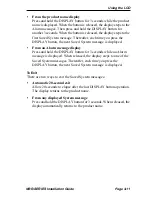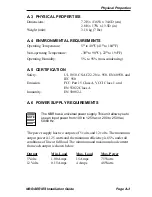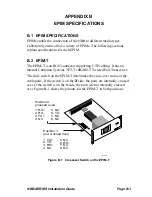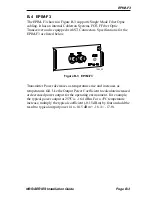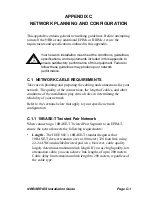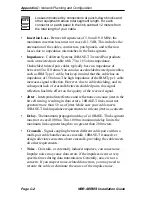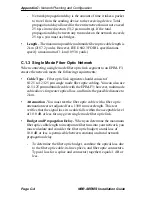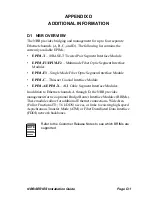
Network Cable Requirements
NBR-SERIES Installation Guide
Page C-3
•
Temperature - Multi-pair PVC 24 AWG telephone cables typically
have an attenuation of approximately 8-10 dB/100 m at 20
°
C (68
°
F).
The attenuation of PVC insulated cable varies significantly with
temperature. At temperatures greater than 40
°
C (104
°
F), we strongly
recommend using plenum-rated cable to ensure attenuation remains
within specification.
C.1.2 Multimode Fiber Optic Network
When connecting a multimode fiber optic link segment to an EPIM-F1 or
EPIM-F2, ensure the network meets the following requirements:
•
Cable Type - Use the EPIM-F1 and EPIM-F2 for the following
multimode fiber optic media:
-
50/125
µ
m fiber optic cabling
-
62.5/125
µ
m fiber optic cabling
-
100/140
µ
m fiber optic cabling
•
Attenuation - You must test the fiber optic cable with a fiber optic
attenuation test set adjusted for an 850 nm wavelength. This test
verifies the signal loss if a cable falls within the following acceptable
levels:
-
13.0 dB or less for a 50/125
µ
m fiber cable segment
-
16.0 dB or less for a 62.5/125
µ
m fiber cable segment
-
19.0 dB or less for a 100/140
µ
m fiber cable segment
•
Budget and Propagation Delay - When you determine the maximum
fiber optic cable length to incorporate fiber runs into your network, you
must calculate and consider the fiber optic budget (a total loss of
10.0 dB or less is permissible between stations) and total network
propagation delay.
-
To determine the fiber optic budget, combine the optical loss due
to the fiber optic cable, in-line splices, and fiber optic connectors.
Typical loss for a splice and connector (together) equals 1 dB or
less.


